Canada — aka the “Great White North” — is the world’s second-largest country, behind only Russia. With 3.8 million square miles to explore, travelers have endless possibilities, from the thunderous cascade of Niagara Falls to the jaw-dropping landscapes of Banff, Canada’s oldest national park. Don’t know where to start? Here are seven of our favorite places to visit in Canada.
Peace Tower – Ottawa

Along with the maple leaf, Ottawa’s Peace Tower is a significant symbol of national pride and heritage. This spectacular 300-foot-tall bell tower stands atop Parliament Hill in the Canadian capital, where it was constructed in the wake of a 1916 fire that destroyed most of the previous structure, the Victoria Tower. Designed by John Andrew Pearson, the tower debuted on July 1, 1927, to commemorate Canada’s Diamond Jubilee of Confederation.
The neo-gothic tower is decorated with ornate stonework including gargoyles and grotesques. Each side features a working clock face reminiscent of the one gifted to Canada by the United Kingdom in 1927 (the original now sits in the observation deck). The Peace Tower also houses a set of 53 bells, which were heard nationwide as part of Canada’s first live coast-to-coast radio broadcast that coincided with the tower’s opening ceremony. Visitors can pay their respects in the Memorial Chamber, a somber reminder of the 66,000 Canadians who lost their lives defending their country in World War I and whose names are enshrined in the chamber’s Book of Remembrance.
Cape Breton Island – Nova Scotia
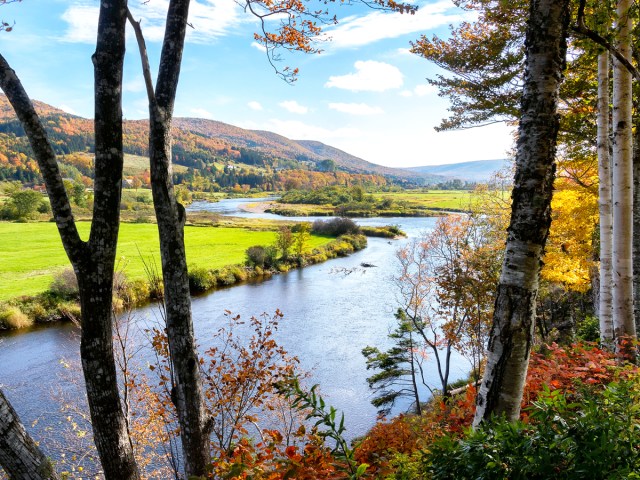
The northeastern tip of Nova Scotia is known for rare confluences. Sometimes, they’re literal, as is the case of the Arctic and warm subtropical waters that come together in Bras d‘Or Lake (not actually a lake, but rather an estuary that’s teeming with wildlife — and a UNESCO-designated Biosphere Reserve). But the cultural confluences are no less rare or distinctive.
Here, you’ll find a blend of Indigenous, Gaelic, and — as the current name would suggest — French influences, which include Celtic fiddling, Acadian dancing, and Mi’kmaq storytelling. This last group, which precedes the others here by millennia, bestowed the name Unama’ki (“land of the fog”) on the island, and the best place to see why is the Cabot Trail. The stunningly scenic roadway — about a third of which runs through Cape Breton Highlands National Park — covers 185 miles of seaside mountains and quaint fishing villages, and is about as bucket-list worthy as road trips get.
Fairmont Le Château Frontenac – Québec City, Québec
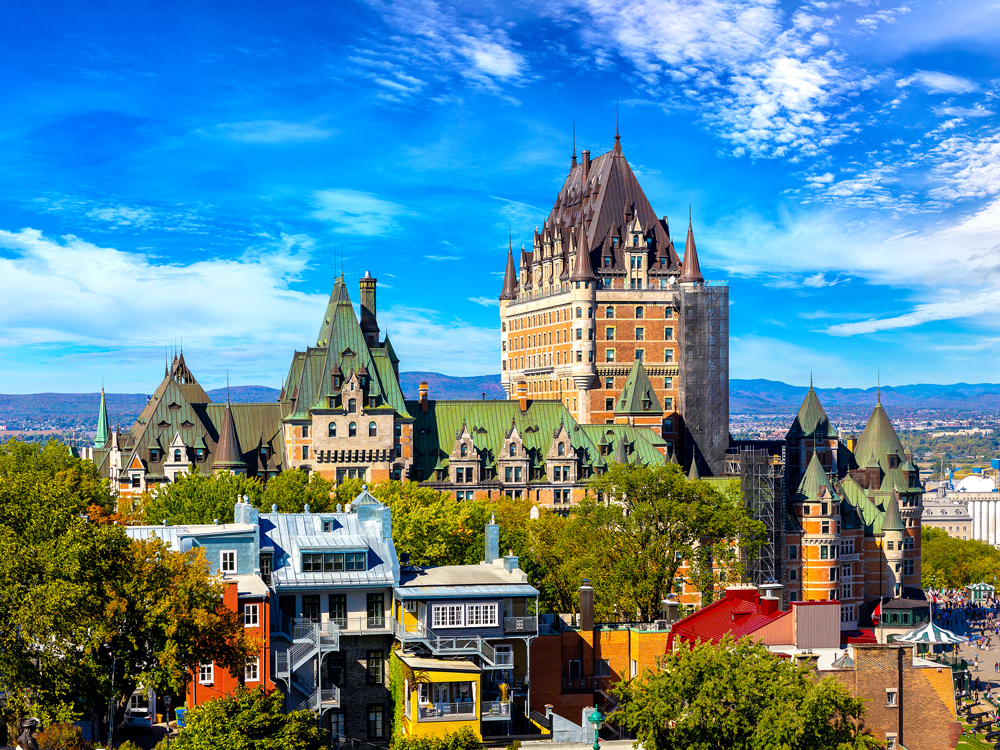
Among the grandest of grand dames on the North American hospitality scene, this stunning hotel comes by her château title honestly, occupying the grounds of the former Château Saint-Louis. That first outpost, destroyed by fire in 1834, had been the principal administrative seat of Québec’s colonial governments. But it was the Canadian Pacific Railroad Company that set its sights on the property next, with locomotion reshaping the face of the continent and grand railway hotels becoming an increasingly hot commodity around the turn of the 20th century. Architect Bruce Price was brought on board and incorporated classic 16th-century French architecture into his design, and the Château Frontenac Hotel was born in 1893.
Since then, this National Historic Site has boasted an epic guest registry, with Grace Kelly, Charles de Gaulle and Queen Elizabeth among the entries. Most have come for the lavish accommodations alongside the majestic Saint Lawrence River and UNESCO-listed Old Québec, but others had much more sobering motivations: FDR and Churchill met here during World War II’s Quebec Conferences. Having since become a Fairmont property, the hotel remains the city’s most iconic stay.
Casa Loma – Toronto, Ontario
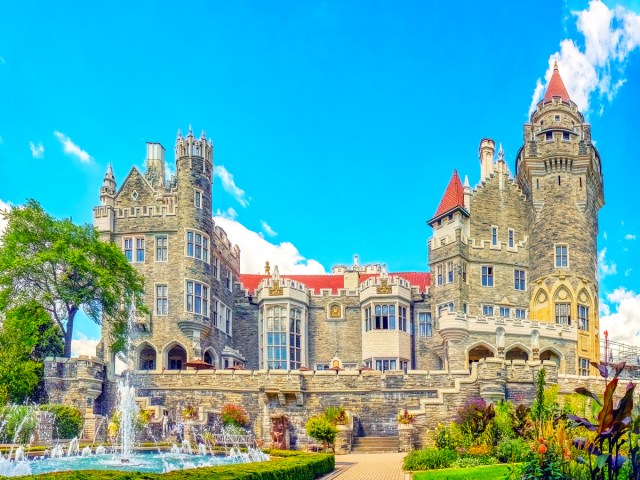
Once the largest private residence in Canada, Casa Loma (Spanish for “Hill House”) was constructed in 1911 for soldier and financier Major-General Sir Henry Mill Pellatt, who co-founded the Toronto Electric Light Company and helped bring electricity to Toronto in the late 19th century. Inspired by Pellatt’s European travels, the 98-room, 30-bath Gothic Revival chateau featured secret passageways, heated flower beds, mahogany and Spanish tile horse stables, a 10,000-book library, and a cellar that contained almost 2,000 bottles of wine.
All of this extravagance eventually bankrupted the major-general, who was forced to sell many of his prized possessions for a fraction of their worth and eventually left the mansion in 1923. Fortunately for design aficionados and history buffs, Casa Loma is now open to the public as a museum. Stroll the elaborate and beautifully maintained gardens, take in a stunning view of the Toronto skyline, or savor Michelin-starred Italian cuisine under a stained-glass dome at one of the estate’s three restaurants.
Auyuittuq National Park – Nunavut

Its name (pronounced “ow-you-we-took”) is the Inuktitut word for “the land that never melts,” and this 8,000-square-mile reserve on Canada’s Baffin Island certainly lives up to that title. Composed of approximately 85% rock and ice, the glacier-filled Arctic wilderness has the briefest of summers — and some of the country’s most dramatic coastline. A land of whales and seals, caribou and polar bears, it’s the home of the Inuit people and a destination for experienced mountaineers who come to pit themselves against the challenges of its harsh granite peaks.
James Bond parachuted from one of the twin summits of Auyuittuq’s Mount Asgard in The Spy Who Loved Me, but the most challenging peak in the remote and regal park is Thor Peak. Named for the Norse god of thunder, the mountain’s western face is the longest vertical drop on the planet. Plunging 4,101 feet into the Weasel River valley, the sheer face has a 105-degree angle overhang, making the stomach-dropping descent even steeper than “straight down.” While it has undeniable allure for base jumpers, Thor is strictly off limits — those who attempt to skirt the law (and make it) will find themselves subject to prosecution.
Moraine Lake – Alberta
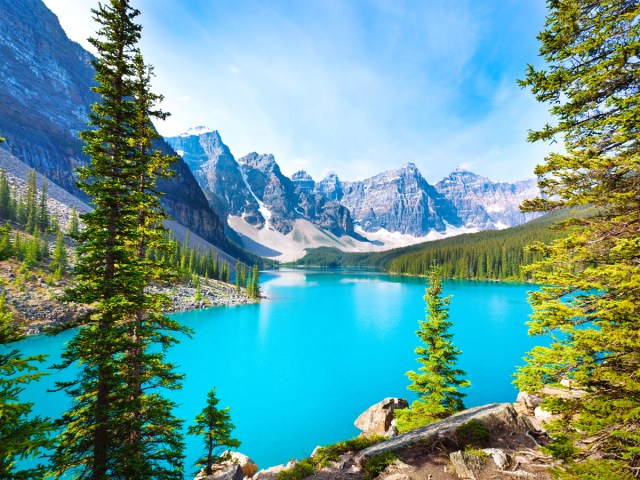
There are alpine lakes — with their requisite glacier-fed waters and snow-capped mountain backdrops — and then there’s Moraine Lake. Located in Alberta’s Banff National Park, Canada’s oldest national park, this alpine crown jewel is hidden within the Valley of Ten Peaks in the Canadian Rockies. Though often skipped by tourists in search of the more famous Lake Louise nearby, Moraine Lake is every bit as stunning. The lake owes its unforgettable piercing blue hue to ice melt: As glacial water melts, the water flows into the lake along with bits of glacial silt or rock flour, which are transferred and remain suspended in the lake water, reflecting sunlight. This phenomenon gives the lake its brilliant azure color.
If you want to witness one of Canada’s most photographed spots yourself, lookout points are easily accessible by car, but Moraine Lake’s growing popularity means that spots can fill up quickly in the peak summer months. For the most memorable views, there are several hikes (from easy walks to more strenuous treks), and you can canoe or kayak on the lake in the summer.
Montréal Biosphere – Montréal, Québec

The most eye-catching feature of the Montreal skyline — a 20-story geodesic dome called the Montréal Biosphere — is the work of the visionary American architect Buckminster Fuller. The lightweight but durable structure was created to house the American Pavilion when Montreal assumed hosting duties for the Expo 67 world’s fair. The American Pavilion quickly emerged as the top attraction of the event, transfixing its 5.3 million guests with Fuller’s futuristic design — which even inspired Spaceship Earth at Walt Disney World’s Epcot theme park.
The Biosphere’s steel lattice exterior weighs more than nine tons and stretches across a nearly 250-foot diameter, which reflects onto the St. Lawrence River from its perch on St. Helen’s Island. The historic exhibition halls now house North America’s first environmental museum, a family-friendly destination filled with interactive exhibits, but you may want to pack a dinnertime picnic and return at dusk, when you can relish one of the Biosphere’s dazzling chromatic light shows.
Victoria – British Columbia
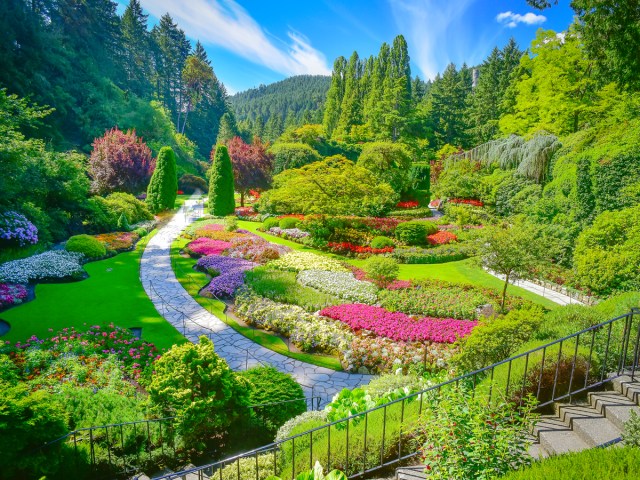
The capital of Canada’s British Columbia province, Victoria is effortlessly charming — from its British-influenced architecture to the expansive gardens, pedestrian-friendly streets, and seaside setting. The area was originally home to people of the Songhees and Esquimalt First Nations, but after the arrival of the Hudson Bay Company in 1843, it transitioned from a fishing village to a bustling cityscape lined with palatial legislative buildings.
Victoria later became an attractive tourist destination, thanks in part to the Inner Harbour Causeway, a walkway originally constructed in 1903 that still houses market stalls and street performers. One of the star architectural landmarks of the Inner Harbour is the Fairmont Empress Hotel, an Edwardian-style 1908 building that offers both a luxury stay and a spooky adventure for those who believe rumors that it’s haunted. (Even if you’re not staying at the hotel, popping by for afternoon tea is a must.)
More from our network
Daily Passport is part of Optimism, which publishes content that uplifts, informs, and inspires.























